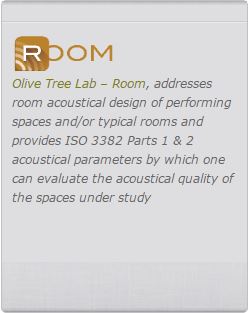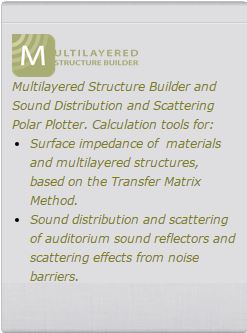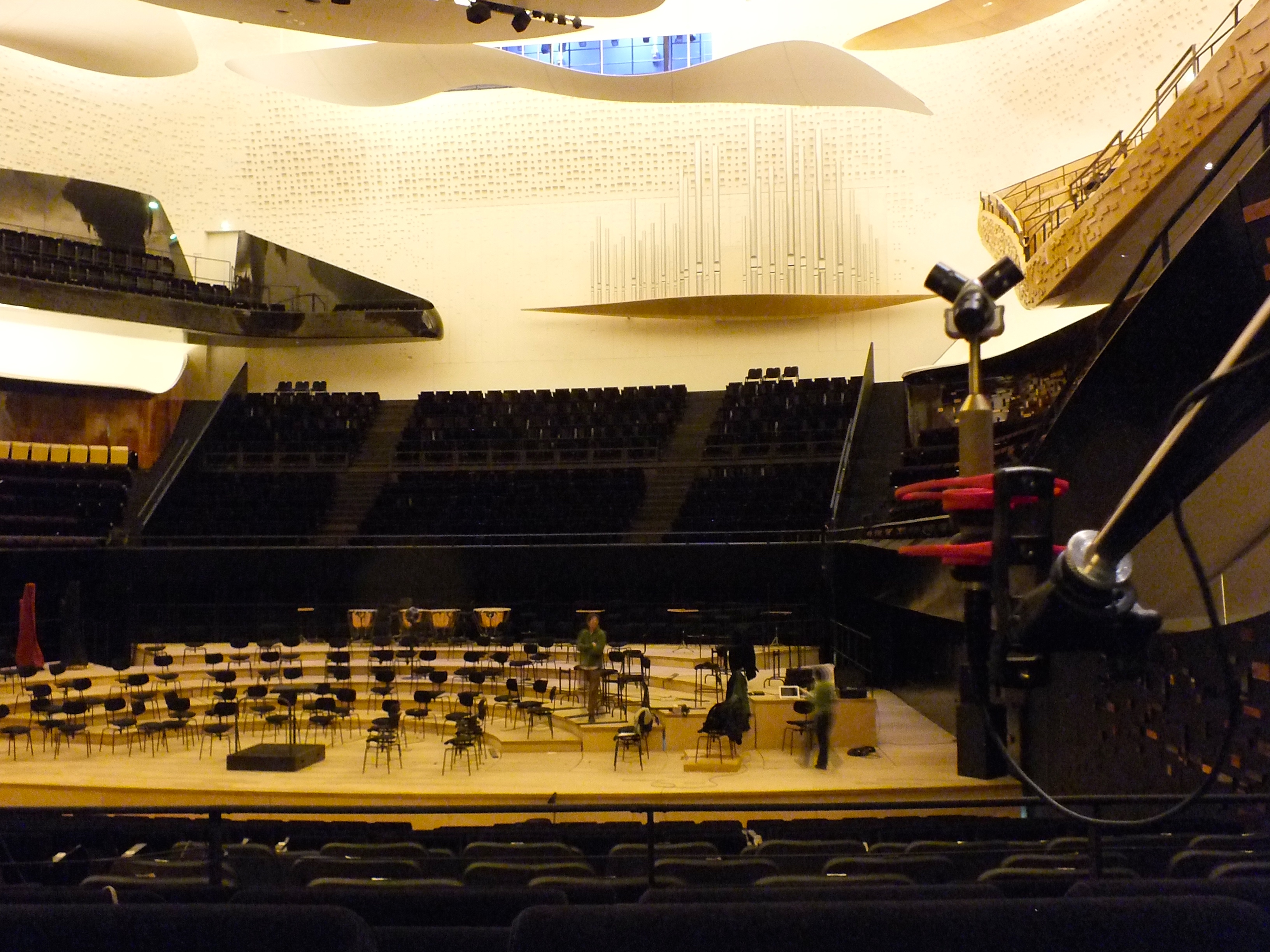Vibraphon distribute software and measurement systems within acoustics and vibration to clients in Scandinavia.
New! New features in Iris
IRIS currently allows consultants to accurately measure a range of acoustic parameters including many which have traditionally been very difficult to obtain, such as lateral fraction. Recently, our development team has been working behind the scenes to expanding IRIS’s toolbox even further.
The latest version is nearly complete and new features will allow users to measure intelligibility metrics.
New IRIS tools will measure:
- speech intelligibility (STI according to IEC 60268-11 Ed. 4)
- spatial decay rate (D2,S)
- level of speech at 4 m from source (Lp,A,S,4m)
- distraction distance (rd)
- privacy distance (rp)
- VDI 2569 room acoustic class
These new metrics are calculated according to procedures detailed in two recently published office acoustics standards, ISO 3382-3:2012 Acoustics -- Measurement of room acoustic parameters -- Part 3: Open plan offices and VDI 2569:2016-02-Draft Sound protection and acoustical design in offices.
New! RAP-ONE II
We proudly present a completely new version of RAP-ONE.
RAP-ONE is released in a completely new version with new calculation algorithm (pyramid tracing) and a new 3D interface. It is still the same easy-to-use software that has made RAP-ONE to a popular software for noise mapping Indoors and room acoustic studies.
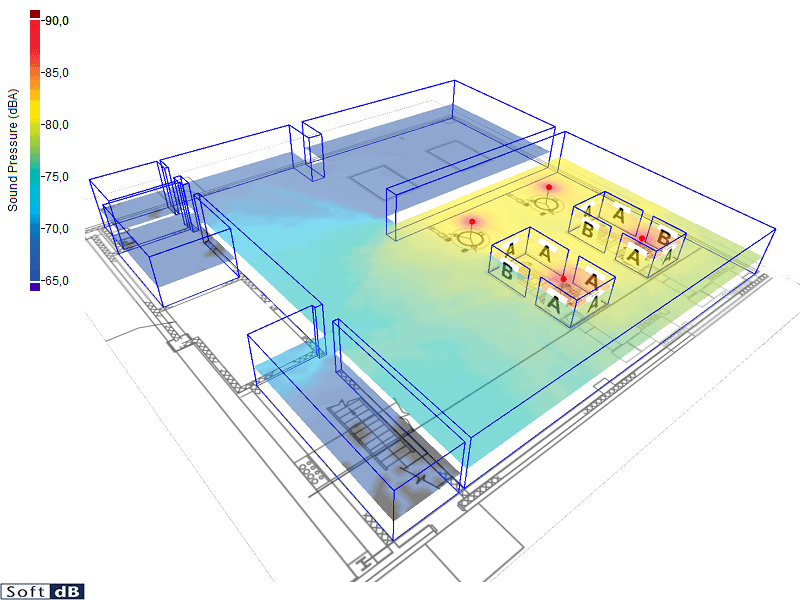
Nyhet! Insul version 9.0
Marshall Day Acoustics are delighted to announce the release of version 9.0 of INSUL.
This new version presents a major over haul of the user interface to provide a new foundation for the next 10 years development of this world leading software. The most obvious feature to the thousands of INSUL users will be the 3 D illustration of the partition to be calculated. This can be rotated, zoomed and an X ray view displayed. This makes the communication with an end user of the calculations easier and provides a degree of confidence that the prediction is based on the users actual partition design. A trial version can be downloaded from the download page on this website and a trial key obtained from your local distributor.
A short list of new features compared to version 8
- New user interface design with 3 D illustration of the construction that can be zoomed and rotated.
- Better utilisation of small or big screens. (Elements of interface can be re-arranged for personal preference)
- Prediction of floating floors using polystyrene or mineral wool with concrete screed on top.
- Double absorptive blankets can be selected (means illustrations can be more realistic)
- Prediction of external cladding systems using PIR or Polystyrene insulation
- Better auralisation with a user expandable library of sounds. Ability to record auralisations for later replay without INSUL
- New types of connections and improved illustrations
- Thermal insulation of glazing (according to EN 673)
- Database of steel or timber studs (standard sizes selected from menu).
- Pitched roofs can now be predicted
- Multi-platform (Windows, Apple Mac Os) (this may be a couple of months away)
- Better search through materials files.
- Filtering lists by category or manufacturer.
- New types of frames/connections such as Batten and Cradle isolation pads
- Add copy and paste functions to composite TL calculator, and to outdoor-indoor calculator (so you can transfer results).
Vibraphon was present at BNAM in Stockholm 20-22 June.
One paper was presented, "Using Wave Based Geometrical Acoustics (WBGA) to investigate room resonances". The paper was written together with Pemard.
Download paper Download presentation
IRIS was used successfully for measurements in the new IMAX theatre at Filmstaden Scandinavia in Stockholm.

NEW! Olive Tree Lab 3.0
- Outdoor Sound Propagation, Room Acoustics and Open-Plan Office Calculation Software
Welcome to Olive Tree Lab 3.0 a suite of 3D acoustical software applications in one working environment. These applications are, Room Acoustics (OTL – Room), Open Plan Office (OTL-Office) and Outdoor Sound Propagation, (OTL -Terrain).

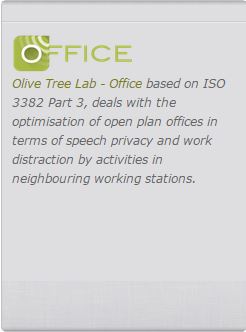
....think of OTL-Suite as the equivalent of MS Office in Acoustics, many applications talking to each other seamlessly
OTL-3.0 is the first ever acoustical software application which offers such flexibility among calculations in the various fields of acoustics within the same environment. No more transferring incompatible data from one application to another.
OTL-3.0 is the first acoustical software application to include a multilayered structure builder based on the Transfer Matrix Method which calculates surface impedance, sound absorption coefficient and sound transmission loss in structures or materials.
OTL-3.0 includes Scattering Polar Plotter, an application for calculation of sound distribution and scattering of auditorium sound reflectors and scattering effects from noise barriers.
OTL-3.0 is the first ever acoustics software to apply spherical wave propagation over impedance surfaces. This approach enables the calculation of non-common acoustical phenomena such as surface waves and ground waves. Such waves have great impact on the simulation of outdoor sound propagation but also room acoustics, especially at grazing incidence.
Se an illustrating tutorial that covers all parts of OTL Suite in a real project
https://m.youtube.com/watch?v=5Wcq3FeE1mw&feature=youtu.be
NEW! dBSea - Prediction of underwater noise
Despite what most people think the sea below surface is not very quiet. A lot of the sound sources are natural and is part of the background noise in the sea. Examples of natural noise sources are rain, interaction between wind and waves and also vulcanic activity can cause noise on far distance.
Many forms of marine life depend on sound for their communication, navigation and development. Noise generated by man can obstruct these vital functions and biologists are concerned about both physiological disorders as disorders in animal behavior. Especially in marine mammals, many species have very sensitive hearing. Noise generated by man in underwater environments include noise from ship traffic, pile driving and seismic surveys with impulse sources. EU Marine Directive descriptor 11 dictate that noise in the seas must not harm marine life. dBSea is a tool to comply with this Directive.
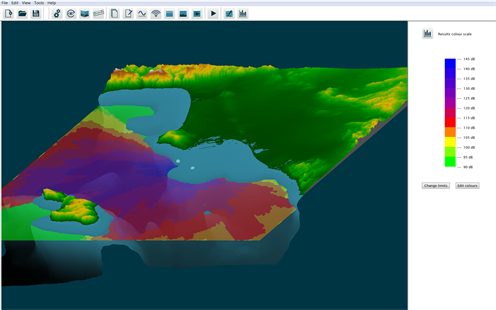
dBSea is a software for prediction of underwater noise. It uses several different prediction models and the user have full control over which to use depending on current application. The 3D model is built by importing bathymetry data and placing noise sources in the environment. Each source can consist of equipment chosen from either the standard or user defined databases. Noise mitigation methods may also be included. The user has control over the seabed and water properties including speed of sound profile (how the speed of sound changes with water depth), temperature, saltinity and current.
Noise levels are calculated throughout the entire project area and displayed in 3D. To examine results in more detail, levels may be plotted in cross sections or a detailed spectrum may be extracted at any point in the 3D calculation area.
More info about dBSea under products/dBSea
IRIS at the new Philharmonie de Paris
IRIS was recently used by the MDA team at the commissioning of the new Philharmonie de Paris. IRIS proved to be an invaluable tool, achieving a full set of detailed measurements under challenging circumstances and a tight time frame (50 separate source/receiver measurements in 5 hours).
"IRIS performed flawlessly throughout the commissioning and the 3D rays enabled investigation of things instantly on site that would never have been possible with traditional measurement systems. The design of the hall is groundbreaking and being able to walk away with a 3D representation of the sound field in each position will also be invaluable for more detailed analysis in the future " - Chris Day - Project Director
More about the measurements in the Philharmonie de Paris PARIS - IRIS
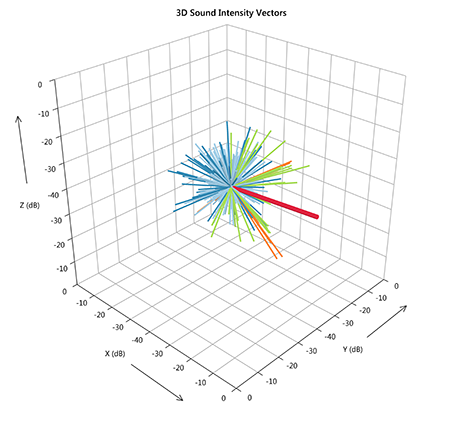

IRIS is a new measurement system that promises to provide a dramatic step forward in being able to understand the acoustics of rooms. The system comprises a tetrahedral microphone that can resolve the sound field into different directions, and software that can analyse the signals from the four microphones and present the information in simple yet elegant way that aids ones understanding of the behaviour of the sound field.
- IRIS is an affordable software and hardware 3D impulse response measurement system
- Interactive 3D rotation and zoom
- 3D colour-coded representation of sound rays
- Length indicates relative sound intensity level, angle is the ray direction, and colour represents time of arrival
- Specific angle and level information for individual rays for detailed analysis
- Traditional omnidirectional waveform views
- Broadband and octave band filtered views
- EDT, T20, T30, D50, C80, Ts in octave band according to ISO 3382-1:2009
- LF
- G coming soon
More info in Software - IRIS
NYHET! INSUL 8.0
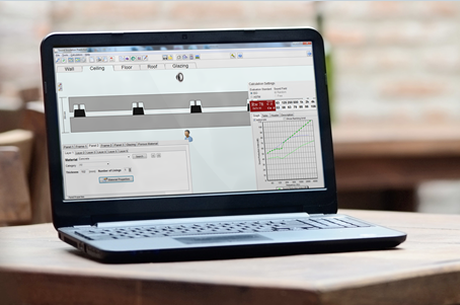
Marshall Day are pleased to announce version 8.0 is now available. The main new features include
- Improved calculation routines to increase accuracy
- 6 different materials allowed to make up each panel (previously only 2)
- First panel mode now accounted for (especially important for gypsum walls with studs at 400mm or 16” centres)
- Steel studs can now be of 0.55m (26 gauge) or 1.0 – 1.6 mm (20 – 16 gauge)
- Composite steel floors can be predicted using steel pan dimensions and the new orthotropic algorithms.
- New Orthotropic algorithms for improved prediction of light steel panels (corrugated or trapezoidal profile)
- Improved algorithms for cavity insulation now more accurately predicts the effects of changing cavity insulation (most apparent for double stud walls)
- Improved glazing predictions of laminated and double and triple glazing
- Several new frame or connection types, including Mason and Kinetics floating floors, and Insulated plasterboard such as Calibel.
- New algorithms for predicting the reduction in impact sound pressure levels from floor covers with and without underlay
- New algorithms for predicting the reduction in impact sound pressure levels from floor covers with polystyrene underlays
- New algorithms for predicting the reduction in impact sound pressure levels from floating floors including Mason and Kinetics
- An updated list of floor covers, which includes details (density, stiffness, damping, orthtropic ratio) which can be used for predicting the reduction in impact sound pressure levels
- Separate collections of floor covers for heavy and light weight floors
- Customisable flanking limits
- New material search options using either a filter by category or a search box for key terms.
- A refreshed user interface
- Improved help files

